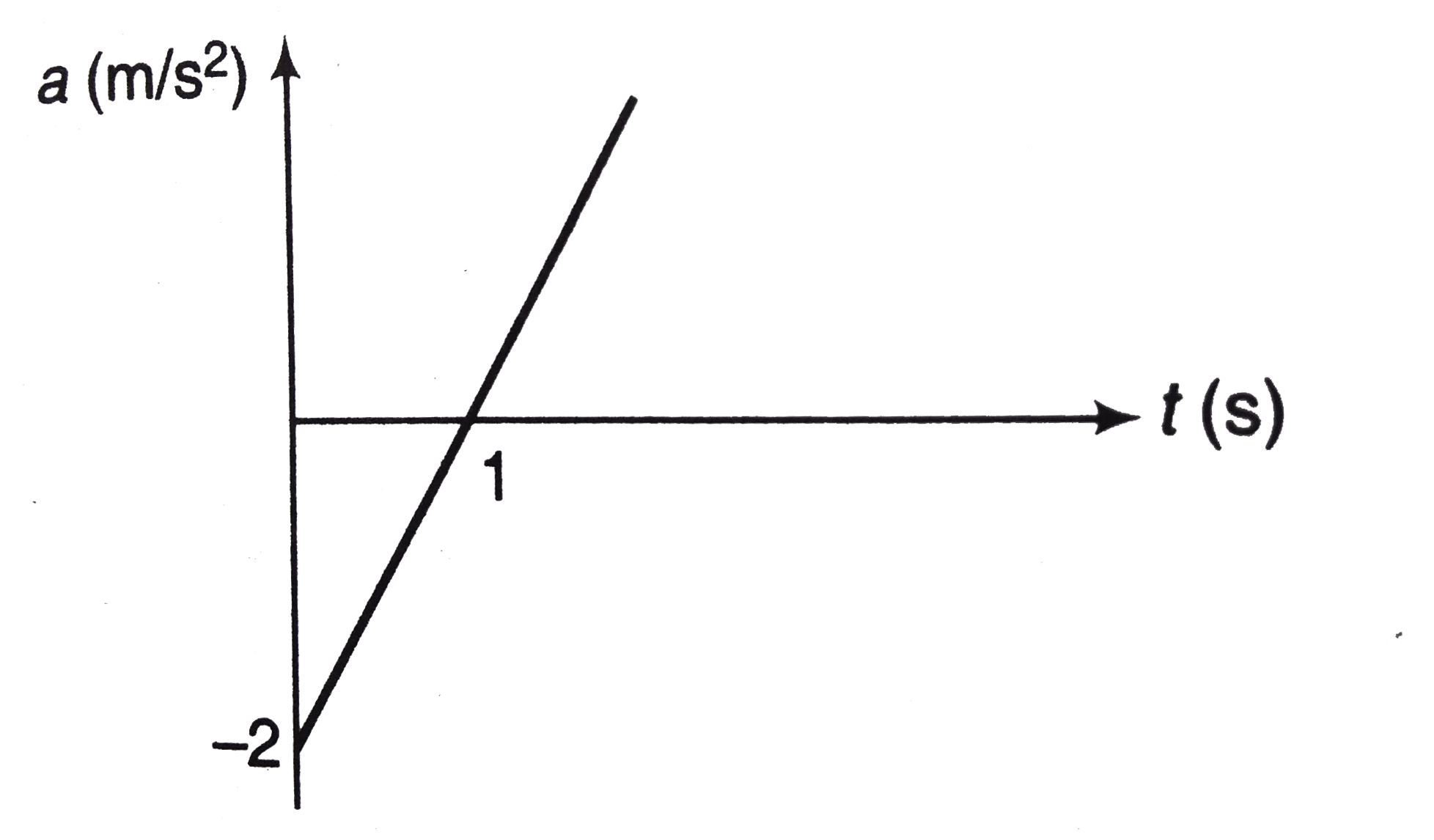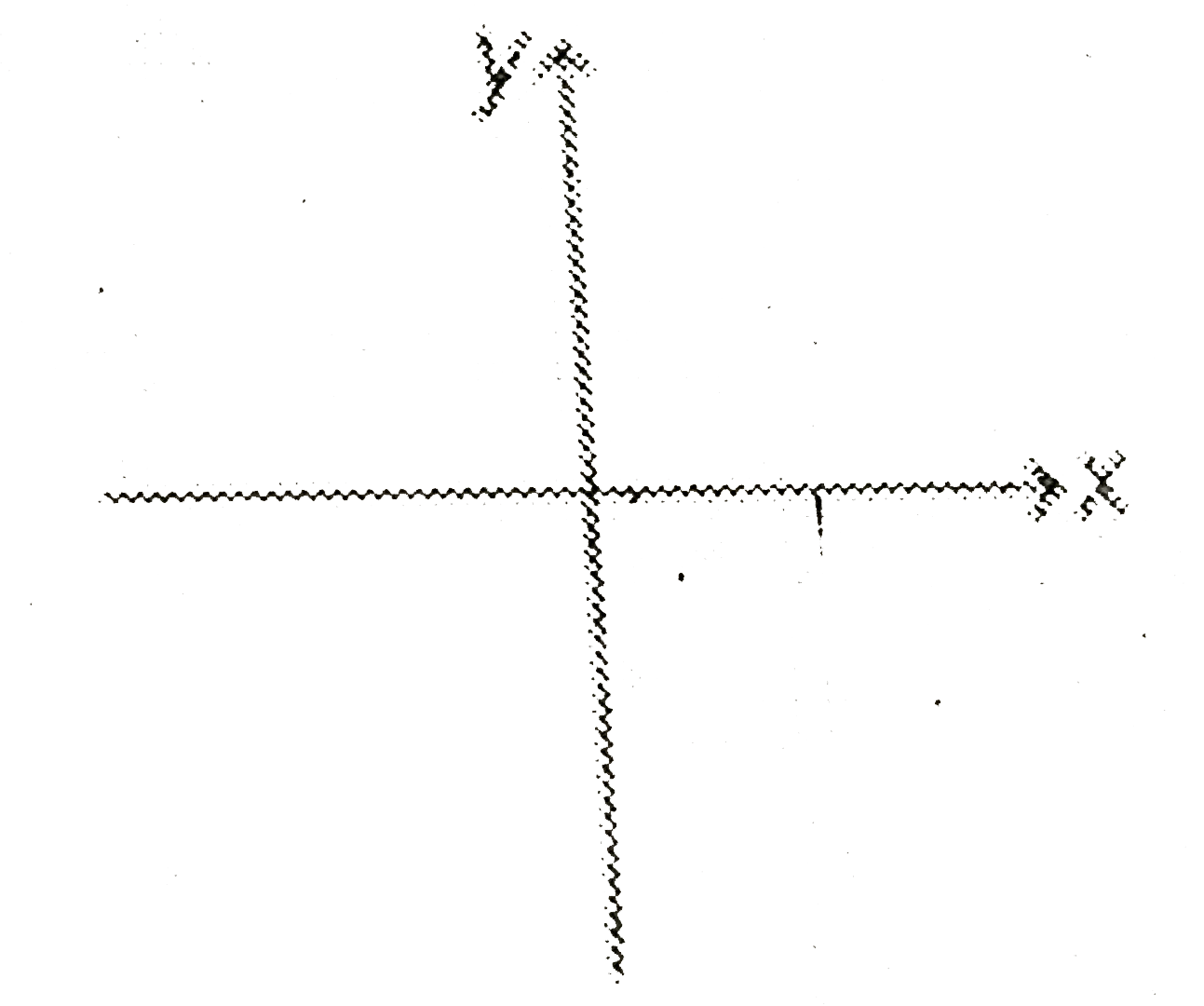The acceleration of a particle, given by relation, a=−5ω2sin(ωt). At t=0, x=0 and v=5ω. The displacement of this paticle at time t will be
−5sin(ωt)
5sin(ωt)
5Cos(ωt)
−5Cos(ωt)
The correct Answer is:B
To solve the problem step by step, we will follow the given information and derive the displacement of the particle at time t.
Step 1: Write down the acceleration equation
The acceleration a of the particle is given by:
a=−5ω2sin(ωt)
Step 2: Relate acceleration to velocity
Acceleration can also be expressed as the derivative of velocity with respect to time:
a=dvdt
Thus, we can write:
dvdt=−5ω2sin(ωt)
Step 3: Integrate to find velocity
We will integrate both sides with respect to t. The limits for v will be from 5ω (initial velocity at t=0) to v (velocity at time t), and the limits for t will be from 0 to t:
∫v5ωdv=∫t0−5ω2sin(ωt)dt
This gives:
v−5ω=5ω2∫t0sin(ωt)dt
Step 4: Compute the integral
The integral of sin(ωt) is:
∫sin(ωt)dt=−1ωcos(ωt)
Thus, we have:
∫t0sin(ωt)dt=−1ω(cos(ωt)−cos(0))=−1ω(cos(ωt)−1)
This simplifies to:
∫t0sin(ωt)dt=1−cos(ωt)ω
Step 5: Substitute back into the velocity equation
Substituting the integral back, we have:
v−5ω=5ω2(1−cos(ωt)ω)
This simplifies to:
v−5ω=5ω(1−cos(ωt))
Thus,
v=5ω+5ω(1−cos(ωt))=5ωcos(ωt)
Step 6: Relate velocity to displacement
Velocity is also the derivative of displacement x with respect to time:
v=dxdt
Thus, we can write:
dxdt=5ωcos(ωt)
Step 7: Integrate to find displacement
Now we integrate both sides with respect to t:
∫dx=∫5ωcos(ωt)dt
The integral of cos(ωt) is:
∫cos(ωt)dt=1ωsin(ωt)
Thus, we have:
x=5ω⋅1ωsin(ωt)+C
This simplifies to:
x=5sin(ωt)+C
Step 8: Determine the constant of integration
At t=0, we know x=0:
0=5sin(0)+C⇒C=0
Thus, the displacement becomes:
x=5sin(ωt)
Final Answer
The displacement of the particle at time t is:
5sin(ωt)
The acceleration a of the particle is given by:
a=−5ω2sin(ωt)
Acceleration can also be expressed as the derivative of velocity with respect to time:
a=dvdt
Thus, we can write:
dvdt=−5ω2sin(ωt)
We will integrate both sides with respect to t. The limits for v will be from 5ω (initial velocity at t=0) to v (velocity at time t), and the limits for t will be from 0 to t:
∫v5ωdv=∫t0−5ω2sin(ωt)dt
This gives:
v−5ω=5ω2∫t0sin(ωt)dt
The integral of sin(ωt) is:
∫sin(ωt)dt=−1ωcos(ωt)
Thus, we have:
∫t0sin(ωt)dt=−1ω(cos(ωt)−cos(0))=−1ω(cos(ωt)−1)
This simplifies to:
∫t0sin(ωt)dt=1−cos(ωt)ω
Substituting the integral back, we have:
v−5ω=5ω2(1−cos(ωt)ω)
This simplifies to:
v−5ω=5ω(1−cos(ωt))
Thus,
v=5ω+5ω(1−cos(ωt))=5ωcos(ωt)
Velocity is also the derivative of displacement x with respect to time:
v=dxdt
Thus, we can write:
dxdt=5ωcos(ωt)
Now we integrate both sides with respect to t:
∫dx=∫5ωcos(ωt)dt
The integral of cos(ωt) is:
∫cos(ωt)dt=1ωsin(ωt)
Thus, we have:
x=5ω⋅1ωsin(ωt)+C
This simplifies to:
x=5sin(ωt)+C
At t=0, we know x=0:
0=5sin(0)+C⇒C=0
Thus, the displacement becomes:
x=5sin(ωt)
The displacement of the particle at time t is:
5sin(ωt)
Topper's Solved these Questions
Similar Questions
A starts from rest, with uniform acceleration a. The acceleration of the body as function of time t is given by the equation a = pt, where p is a constant, then the displacement of the particle in the time interval t = 0 to t=t1 will be
View SolutionThe SHM of a particle is given by the equation x=2sinωt+4cosωt. Its amplitude of oscillation is
View SolutionThe acceleration of particle varies with time as shown.

(a) Find an expression for velocity in terms of t.
(b) Calculate the displacement of the particle in the interval from t=2s to t=4s. Assume that v=0 at t=0.
View SolutionPosition vector of a particle moving in x−y plane at time t is r=a(1−cosωt)ˆi+asinωtˆj. The path of the particle is
View SolutionDisplacement-time equation of a particle executing SHM is x=4sin(ωt)+3sin(ωt+π/3)
Here, x is in cm and t ini sec. The amplitude of oscillation of the particle is approximately.
View SolutionThe displacement of a particle performing simple harmonic motion is given by, x=8sinωt + 6 cos ωt, where distance is in cm and time is in second. What is the amplitude of motion?
View SolutionVelocity-time equation of a particle moving in a straight line is, v=(10+2t+3t2) (SI units) Find
(a) displacement of particle from the mean position at time t=1s, if it is given that displacement is 20m at time t=0.
(b) acceleration-time equation.
View SolutionThe acceleration of a particle is given by a (t)=(3.00 m/s2−(2.00ms3))t. (a) Find the initial speed v0 such that the particle will have the same x -coordinate at t =5.00 as it had at t=0. (b)What will be the velocity at t =5.00s?
View SolutionA xandy co-ordinates of a particle are x=Asin(ωt)andy=Asin(ωt+π/2). Then, the motion of the particle is

View SolutionThe displacement of a particle along the x-axis is given by x=asin2ωt. The motion of the particle corresponds to
View Solution
